An English Korean Illustrated History of the Korean War
▶ By W.Y. Joh, Ph.D.
For three days prior to the landing, American ships and planes bombarded Wolmido, the strategically important island at the entrance of the Inchon harbor, which was being defended by a North Korean artillery company. The Communists resisted with their four big-caliber guns, slightly damaging three American destroyers that had sailed within their firing range on purpose. By firing at the destroyers, the enemy guns gave away their positions so that the American planes and naval guns could easily silence them.
Thanks to this pre-invasion softening-up, Operation Chromite went smoothly on September 15. A U.S. Marine battalion easily captured Wolmido in the early morning. From the command ship General MacArthur saw a light in the distance. “They’ve left their navigation lights on, General,” an admiral said. “That’s courtesy,” MacArthur replied smilingly. (They apparently did not know that a commando team led by a U.S. Navy lieutenant had sneaked into a light house on Palmido islet and turned on the oil lamp the night before. The team included several South Koreans.) In the afternoon at high tide, units of marines and soldiers, including two ROK regiments, hit the shore. MacArthur had expected at least 100 casualties, but only 20 men were killed and about 50 wounded. “General MacArthur’s great gamble had paid off,” wrote the New York Herald Tribune’s Marguerite Higgins who had landed at Inchon with the marines. (In 1951, Miss Higgins was awarded a Pulitzer Prize for her outstanding coverage of the Korean War.)
상륙 전 3일동안 미군 비행기와 군함들은 북한군 포병 1개중대가 지키고있는 월미도--인천항 입구에 위치한 전략적으로 중요한 섬--를 폭격했다. 공산군 방어자들은 4문의 대포를 가지고 저항, 일부러 그들의 사정거리 안으로 들어간 3척의 미 구축함에 가벼운 피해를 입혔다. 이 구축함들에 포격을 함으로써 적의 대포들의 위치가 노출되어 미군은 비행기와 함포사격으로 적 대포들을 쉽게 잠재울수 있었다.
침공 전의 이러한 사전 정지작업 덕분에 9월 15일의 크로마이트 작전은 원활하게 진행되었다. 아침 일찌기 미 해병 1개 대대가 월미도를 손쉽게 점령했다. 사령선에서 매카아더 장군은 멀리 한 줄기 빛을 보았다. “적이 항해등을 켜놓은채 놔두었군요, 장군” 한 해군 제독이 말했다. “예절 한번 바르군” 장군은 미소를 지으며 대꾸했다.(그들은 전날 밤 한 미해군 중위가 지휘하는 특공대가 팔미도 등대에 잠입, 석유 등대불을 켜놓은 사실을 모르고 있는 모양이었다. 이 특공대에는 한국인 몇 사람도 끼어 있었다.) 오후의 만조(밀물) 때 한국군 2개연대를 포함한 해병 및 육군 부대들이 해안에 상륙했다. 매카아더 장군은 적어도 100명의 사장자를 예상했었으나 단 20명의 전사자와 50여명의 부상자를 냈을 뿐이었다. 해병들과 함께 인천에 상륙한 뉴우욕 헤랄드 트리뷴 기자 마아게리트 히긴즈 양은 “매카아더 장군의 대도박은 성공했다”라고 썼다. (한국전쟁의 뛰어난 취재, 보도로 히긴즈양은 1951년에 퓰리처상을 받았다.)
<23>
Did Kim Il-sung know in advance of the Inchon landing? If he had had spies in Japan, he may have known that MacArthur had been planning a landing, because in Tokyo, where the general had his headquarters, the landing operation was an open secret. Newsmen jokingly called it “Operation Common Knowledge.”
But Kim did not do anything to defend Inchon although American planes and ships had begun to soften up Wolmido as early as September 10. Why? Some historians speculate that Kim learned about the landing operation too late to effectively prepare for it, because at the time most of the North Korean troops were way down south along the Nakdonggang line. Others speculate that Kim thought the invasion would be irresistible, so instead of dispatching his troops to Inchon, he began to withdraw them back to the north to save them for future use.
A North Korean feature film, Wolmido, glorifying the artillery company that fought on the island, supports the second speculation. The movie ends with Kim Il-sung’s eulogy: “The Wolmido artillerymen fought very well. As ordered by the Supreme Command, they fought to the last man, delaying the enemy landing for three days to secure strategic withdrawal of the People’s Army. We will never forget their heroic deed.”
김일성은 인천상륙작전을 사전에 알았을까? 만일 그가 일본에 간첩들을 보냈더라면 매카아더가 상륙을 계획하고 있다는 사실을 알았을 것이다. 왜냐하면 매카아더 사령부가 있는 토오쿄오에서는 이 상륙작전이 공개된 비밀이었기 때문이다. 기자들은 이 작전을 농담조로 “(누구나 다 아는)상식 작전”이라고 불렀다.
그러나 미군기와 함정들이 이미 9월10일부터 월미도를 사전공격했음에도 불구하고 김일성은 인천 방어를 위해 아무 일도 하지 않았다. 왜일까? 일부 역사가들은 그 당시 대부분의 북한군이 멀리 남쪽 낙동강 전선에 있었기 때문에 김일성이 인천상륙에 대비하여 효과적인 준비를 하기에는 너무 늦게 정보를 얻었다고 추측하고 있다. 다른 역사가들은 김일성이 인천상륙을 막을 수 없는 것으로 생각하고 군대를 인천에 보내는 대신 그들을 나중에 쓰기 위해 북쪽으로 철수시키기 시작했다고 추측한다.
월미도에서 싸운 북한 포병중대를 영웅화한 “월미도”란 북한 극영화는 두번ㅉ 추측을 뒷바침해주고 있다. 이 영화는 다음과 같은 김일성의 추념사로 끝난다. “월미도 해안포병들은 잘 싸웠습니다. 그들은 최고사령부의 명령대로 인민군대의 전략적 후퇴를 보장하기 위하여 마지막 한 사람이 남을 때까지 결사적으로 싸워 3일 동안이나 적의 상륙을 막아냈습니다. 우리는 월미도 용사들의 영웅적 위훈을 잊을 수 없습니다.”(원문 그대로 옮김)
<24>
At the same time Maj. Gen. Edward M. Almond’s X Corps, that had landed at Inchon, moved toward Seoul, General Walker’s Eighth U.S. Army and ROK units crossed the Nakdonggang and surged north. In just thirteen days after the Inchon landing, UN forces retook practically all of South Korea. During this period, an estimated 20,000 Communists were killed but a considerable number of them managed to escape across the 38th parallel. Tens of thousands were taken prisoner. On one occasion, a ROK marine regiment commander told enemy POWs to sing ‘The Moonlit Night of Silla’, a popular hit song at the time. Those who could sing it were freed on the spot because they were without doubt South Koreans conscripted by the North Koreans as ‘volunteers.’
Seoul was recaptured on September 28. A group of ROK marines hoisted Taegukki, the South Korean national flag, at Joongangchung, the central government building. The residents of the capital city who had survived an 89-day-long Communist occupation rushed out to the streets waving flags. The next day, President Rhee, who had fled to Daejun, Daegoo, and then to Busan, returned to Seoul. At an emotion-filled ceremony Rhee officially took over the capital city from MacArthur. The president grasped the general’s hand and said in English, “We love you as the savior of our nation.”
인천에 상륙한 에드워드 아먼드 소장 휘하의 미10군단이 서울로 향하고 있을 때 워어커 중장의
미8군과 한국군 부대들은 낙동강을 건너 북으로 돌진했다. 인천 상륙 후 단 13일만에 유엔군은 사실상 남한 전체를 되찾았다. 이 기간 동안 약 2만명으로 추산되는 공산군이 죽었으나 상당한 숫자는 38선을 넘어 도주하는데 성공했다. 수만명은 포로로 잡혔다. 한번은 어떤 한국 해병 연대장이 적 포로들에게 당시 히트한 유행가 “신라의 달밤“을 부르게 하고, 그 노래를 부를줄 아는 포로들은 즉석에서 석방했다. 왜냐하면 그들은 북한군이 “의용군”으로 징집한 남한 사람들임에 틀림없었기 때문이었다.
서울은 9월28일 탈환되었다. 일단의 한국 해병대원들이 중앙정부청사인 중앙청에 태극기를 게양했다. 89일동안 공산점령치하에서 살아남은 서울 시민들은 태극기를 흔들면서 거리로 뛰쳐나왔다. 다음 날, 그동안 대전, 대구, 그리고 부산으로 피신했던 이승만 대통령이 서울로 돌아왔다. 감동적인 기념식에서 이대통령은 매카아더 장군으로부터 수도를 정식으로 인계받았다. 대통령은 장군의 손을 꼭잡고 “우리 민족을 구원해준 장군을 우리는 사랑합니다”라고 영어로 말했다.
<25>
By the end of September, UN forces had fulfilled what the June 27 UN Security Council resolution had called for---repelling the Communist aggressors across the 38th parallel. General MacArthur ordered all UN troops to stop marching at the pre-war border. President Rhee pleaded with MacArthur to allow the South Korean army to chase the retreating enemy across the 38th parallel. The general told Rhee that he would urge Kim Il-sung to surrender, and if Kim ignored it, he would use it as an excuse to let UN forces cross the parallel.
On October 1, Kim disregarded MacArthur’s ultimatum to surrender, and the general first allowed ROK troops to cross the 38th parallel. The same day, Chou En-lai, Communist China’s premier and foreign minister, warned that “the Chinese people would not tolerate our neighbors invaded by the imperialists.” The next day, through the Indian Ambassador in Beijing, Chou warned again that “if the Americans crossed the 38th parallel, the Chinese would cross the Yalu River.”
9월 말까지에는 유엔군은 6월27일의 유엔 안전보장이사회 결의안이 희망한 것 즉 북한 침략자들을 38선 이북으로 몰아내는 일은 완수하였다. 매카아더 장군은 모든 유엔군에게 전쟁 전 경계선(38선)에서 진군을 멈추라고 명령했다. 이승만 대통령은 한국군이 38선을 넘어 후퇴하는 적을 추격하게 해달라고 사정했다. 장군은 김일성에게 항복을 권고해보고, 그가 이를 무시하면 그것을 빌미로 유엔군이 38선을 넘게하겠다고 이대통령에게 말했다.
10월1일, 김일성이 항복하라는 최후통첩을 무시하자, 매카아더장군은 먼저 한국군의 38선 돌파를 허용했다. 같은 날, 중공 수상 겸 외상인 조우엔라이(주은래)는 “우리의 이웃나라가 제국주의자들에게 침략당하는 것을 중국 인민은 허용하지 않을것”이라고 경고했다. 다음 날 조우엔라이는
베이징 주재 인도대사를 통해 “만일 미군이 38선을 넘으면 중국군은 압록강을 넘을 것”이라고 재차 경고했다.
<26>
Diplomats at the United Nations debated whether or not it was proper for the UN forces to overkill. When a policeman has caught a pickpocket, he not only returns the wallet to the owner but also sees to it that the thief is punished in accordance with the law. So, the policeman(UN) on October 7 decided to punish the thief(North Korea) by destroying the Communist regime and unifying Korea under a democratic government. Officially the Korean War was not a war. It was a ‘police action’ taken by the United Nations, and the United States bore the brunt of the ‘policing.’
On October 9, the GIs marched across the 38th parallel. MacArthur was confident of a complete victory in Korea when he met President Truman on Wake Island in the Pacific on October 15. In that meeting, MacArthur assured Truman that there was little chance of Chinese intervention. Should the Chinese cross the Yalu, the general said, the U.S. air force would “slaughter” them.
유엔에서 외교관들은 유엔군이 38선 이남 회복 이상의 행동을 하는 것이 온당한 것인지를 놓고 토론을 벌였다. 경찰관이 소매치기를 잡으면, 그는 지갑을 주인에게 돌려줄 뿐만 아니라 도둑이 법에 따라 처벌되도록 조치한다. 따라서 10월7일 유엔이라는 경찰관은 북한이라는 도둑을 처벌하기로 결정했다. 즉, 공산정권을 타도하고 민주적인 정부 아래 한국을 통일하기로 한 것이다. 공식적으로 한국전쟁은 전쟁이 아니었다. 그것은 유엔의 “경찰행위”였으며, 미국은 이 “경찰행위”의 주역이 되었던 것이다.
10월9일, 미군이 38선을 넘어 진군했다. 10월15일 매카아더가 태평양의 웨이크 섬에서 트루먼 대통령과 만났을 때 그는 한국전에서의 완승을 자신하고 있었다.
이 회동에서 매카아더는 중공이 개입할 가능성은 거의 없다고 트루먼에게 말했다. 만일 중공군이 압록강을 건너온다면, 미공군이 그들을 “도살”할것이라고 장군은 말했다.
<27>
The GIs, the ROKs, and other UN soldiers continued their speedy advance north. While marching through a remote North Korean village, a ROK army company saw the villagers waving the Democratic People’s Republic of Korea(DPRK) flags. Having never seen the People’s Army soldiers, the villagers apparently took the South Koreans for North Koreans. The 1st ROK Army Division, commanded by Col. Baik Sun-yup, liberated Pyongyang on October 19. The U.S. 1st Cavalry Division reached the North Korean capital one hour later and to their chagrin saw a sign reading “Welcome 1st Cavalry Division from 1st ROK Division.”(Col. Baik had been a native of Pyongyang before moving to South Korea in 1945. He later became ROK army chief of staff.)
Kim Il-sung fled to Gahnggae, a mountainous town near the Sino-Korean border. (During his hurried flight, Kim abandoned his Soviet-made limousine on the southern bank of the Chungchungang River.) He sent Bahk Hun-young, his South Korean-born vice premier and foreign minister, to Beijing to beseech China to enter the war. Mao Ze-dong obliged, and dispatched Chou En-lai to Moscow to enlist Stalin’s support. Stalin was reluctant. He feared for an enlarged Korean War escalating into a World War III. He even breached the idea of setting up Kim Il-sung’s government-in-exile in Manchuria.
미군과 한국군, 그리고 다른 유엔군들은 발빠른 북진을 계속했다. 북한의 어떤 벽촌을 지나 행군하던 한 국군 중대는 그 마을 사람들이 인민공화국기를 흔들고 있는 것을 보았다. 인민군을 한 번도 본일이 없었던 마을 사람들은 남한 군대를 북한 군대로 착각했던게 틀림없었다.
백선엽 대령이 지휘하는 국군 1사단은 10월19일 평양을 해방시켰다. 미제1기병사단은 이보다 한 시간 늦게 이 북한 수도에 도달했는데, “한국군 1사단이 제1기병사단을 환영함“이라 쓴 팻말을 보고 약이 올랐다. (백대령은 1945년 월남하기 전에 평양에 살았던 토박이인데, 그는 나중에 한국 육군 참모총장이 되었다.)
김일성은 한중 국경에 가까운 곳에 위치한 산골 도시 강계로 도주했다. (급하게 도망가던 김일성은 그의 쏘련제 리무진 승용차를 청천강 남쪽 강변에 버리고 갔다.) 그는 남한 출신 부수상겸 외상인 박헌영을 베이징에 보내 중공의 참전을 간청했다. 마오쩌둥(모택동)은 김일성의 청을 들어주고, 스탈린의 지원을 얻기 위해 조우엔라이(주은래)를 모스크바로 파견했다. 스탈린은 주저했다. 그는 한국전쟁이 3차세계대전으로 확대되는 것을 두려워했다. 그는 만주에 김일성 망명정부를 세워주자는 아이디어를 내놓기까지 했다.
<28>
On October 21, MacArthur again urged Kim to surrender to no avail. By October 25, when General Almond’s X Corps, that had sailed all the way around the coast from Inchon, landed at Wonsan, an advance group of Chinese invaders had already crossed the Yalu secretly and were hiding just south of the Manchurian border. (Peng Teh-huai, who commanded Chinese troops in Korea, writes in his memoirs that he crossed the Yalu as early as October 8, 1950.)
Not knowing of the Chinese presence in Korea, the 6th ROK Army Division reached Chosan on the Yalu on October 26. Proud of their being the first to reach the Sino-Korean border, the South Korean soldiers filled their canteens with water from the river. One of the canteens was sent to their president as a souvenir.
On October 30, President Rhee attended a welcoming ceremony in Pyongyang, fearlessly mingling with residents of the North Korean capital. Upon returning to Seoul, he handed a louse to his wife. He said, “I brought a guest from Pyongyang. He probably moved to my overcoat from the clothes of a Pyongyang resident I hugged.”
10월21일 매카아더는 김일성에게 재차 항복을 권고했으나 효과가 없었다. 아아먼드 장군의 10군단이 인천에서 해안선을 한바퀴 돌아 원산에 도착한 10월25일 쯤에는 중공 침략군의 선발부대가 이미 압록강을 건너와 한만국경 바로 남쪽에 숨어있었다. (한국전에서 중공군을 지휘한 펭더훼이-팽덕회-는 자기가 1950년 10월8일에 이미 압록강을 건넜다고 회고록에 쓰고 있다.)
한국에 중공군이 들어와 있는줄을 모르고있던 국군 6사단은 10월26일 압록강의 초산까지 진격했다. 한중 국경에 가장 먼저 도달했다는 사실이 자랑스러웠던 국군 장병은 압록강물을 수통에 담았다. 수통 하나는 이대통령에게 기념품으로 보냈다.
10월30일, 이대통령은 평양 시민의 환영식에 참석, 시민들과 겁도없이 어울렸다. 서울에 돌아와 대통령은 부인에게 이 한 마리를 건네주면서 “평양에서 손님을 하나 데리고 왔소. 내가 끌어안았던 한 평양 시민의 옷에서 내 외투로 옮겨온듯 하오”라고 말했다. (프란체스카 회고록 인용)
<29>
The first conflict between the Chinese and the UN forces came on October 26 when a ROK army battalion was hit hard by the Chinese near the Yalu. And on November 1, the Americans first clashed with the Chinese at Unsan, a mining town near the border. It was a disaster for the GIs. About 600 of them were killed there.
On the eastern front, a unit of American troops, belonging to the X Corps that had landed at Wonsan three weeks before, reached Hesanjin on the Yalu on November 21. Two days later, on Thanksgiving Day, the Americans ate turkey. The day after Turkey Day, General MacArthur flew to the Yalu and observed the Manchurian border from the air. When his plane touched down at an airstrip on the western front, MacArthur was told by the commanding general of the IX Corps that his troops were also eager to reach the Yalu. “You can tell them,” MacArthur said, “when they get up to the Yalu River, they can all come home. I want to make good my statement that they will get Christmas dinner at home.” He ordered a massive offensive against the Chinese to finish the war quickly.
중공군과 유엔군의 첫 충돌은 10월26일에 있었다. 이날 한국군 1개 대대가 압록강 근처에서
크게 당했다. 그리고 11월1일, 미군과 중공군이 국경선 근처 탄광촌인 운산에서 처음으로 충돌했다. 그 것은 미군의 참패였는데, 그곳에서 약 6백명의 미군이 전사했다.
동부전선에서는 3주전 원산에 상륙했던 10군단 소속 한 미군 부대가 11월21일 압록강의 혜산진에 도달했다. 이틀 후 추수감사절 날 미군들은 칠면조 고기를 먹었다. 칠면조 먹는 날(추수감사절) 다음 날 매카아더 장군은 비행기를 타고 압록강으로 날아가 공중에서 한만국경을 시찰했다. 장군의 비행기가 서부전선의 한 작은 비행장에 착륙하자 미9군단 사령관은 자기 휘하의 장병들도 압록강에 빨리 도달하고 싶어한다고 말했다. 그러자 매카아더 장군은 “장병들에게 말하게. 압록강까지만 가면 모두 고향에 돌아갈수있다고. 크리스마스 디너는 모두 집에서 먹게하겠다는 나의 약속을 지키고싶네”라고 말했다. 그리고 장군은 전쟁을 빨리 끝낼수 있도록 중공군에 대한 대대적인 공격을 명령했다.
<30>
But the Chinese were no “laundrymen” as MacArthur called them in ridicule. Many of them were veterans who had participated in the Sino-Japanese War and the civil war between the Communists and the Nationalists. They were masters of camouflage and hit-and-run tactics. They hid during the day to avoid air strikes and attacked at night. Their attacks often came in the form of so-called “human wave assaults” with eerie bugle-blasts and war cries. The Chinese soldiers seemed not to fear death. “They just kept coming over the dead bodies of their comrades,” a GI later recollected.
Overwhelmed by the sheer numbers of the Chinese, estimated at somewhere between 200,000 and 300,000, UN forces began to retreat all over the front. A frustrated President Truman threatened to use atomic bombs, if necessary, to stem the Chinese human waves.
그러나 중공군은 매카아더 장군이 경멸적으로 호칭한 “세탁소 사람들”이 아니었다(당시 미국에는 화교들이 세탁소를 많이 운영하고 있었음). 그들 중 상당 수는 중일전쟁과 국공내전에 참전했던 역전의 용사들이었다. 그들은 변장술과 치고빠지는 전술의 달인들이었다. 그들은 공습을 피하기 위해 낮에는 숨었다가 밤에 공격했다. 그들은 흔히 이른바 “인해전술”로 나왔는데 소름끼치는 나팔 소리와 돌격 함성을 지르며 공격해왔다. 중공군은 죽음을 두려워하는 것 같지 않았다. “그들은 그저 그들 전우의 시체를 넘고 계속해서 넘어왔다”고 한 미군 병사가 후에 회고했다.
20만 내지 30만명으로 추산되는 중공군의 숫자에 압도된 유엔군은 전 전선에 걸쳐 후퇴하기 시작했다. 좌절감에 빠진 트루먼 대통령은 중공군의 인해를 저지하기 위해 필요하다면 원자탄을 쓰겠다고 협박했다.
<31>
The Communists recaptured Pyongyang on December 4. On December 9, some 20,000 American troops, surrounded by the Chinese near Jahngjin Reservoir north of Hamhung, began the “Big Bugout.” Gen. Oliver P. Smith, commander of the retreating 1st Marine Division who had spearheaded the Inchon landing, jokingly said to a reporter, “Retreat? Hell no! We’re advancing in a different direction!” During the six-day 90km retreat from the Jahngjin Reservoir to the port of Hungnam, about 1,000 Americans were killed or missing and some 3,500 were wounded. The subzero temperature caused many survivors to lose their fingers or toes to frostbite. Over 10,000 Chinese soldiers were presumed to have been killed, mainly by the American air strikes, in the Jahngjin Reservoir battles.
By Christmas Eve, about 105,000 U.S. and ROK troops, and 91,000 North Korean refugees had been evacuated by sea from Hungnam. General Kim Baek-il, commander of the 1st ROK Army Corps, witnessed many tragic scenes on the piers of the Hungnam harbor. Numerous families were split when the LSTs closed their plank doors to the refugees who had no chance to get aboard due to lack of space. Some people desperately clung to the departing LSTs only to fall and drown.
공산군은 12월4일 평양을 탈환했다. 12월9일에는 함흥 북쪽 장진호 부근에서 중공군에 포위된 미군들이 “대 후퇴”를 시작했다. 후퇴하던 미제1해병사단(인천상륙의 선봉부대)의 지휘관 올리버 스미스 장군은 한 기자에게 농담조로 이렇게 말했다.
“후퇴라니? 천만에 말씀! 우리는 지금 다른 방향으로 전진하고있는거요!”
장진호에서 흥남항까지 90킬로를 6일동안 후퇴하면서 미군 약 1천명이 전사 또는 실종되고 3천5백명 가량이 부상당했다. 영하의 기온 때문에 많은 생존자들이 동상으로 손가락이나 발가락을 잃었다.
이 장진호 전투에서 중공군은 주로 미군기의 공습에 의해 1만명 이상 죽은 것으로 추산되었다.
크리스마스 이브까지에는 10만5천명의 미군과 한국군, 9만1천명의 북한 피난민이 해상을 통해흥남으로부터 철수했다. 국군 제1군단장 김백일 장군은 흥남항 부두에서 많은 비극적 장면을 목격했다. 탈 자리가 없어 배에 타지못한 피난민들 앞에서 상륙정의 갑문이 닫힐 때 많은 가족들이 서로 헤어지게 되었다. 어떤이들은 떠나는 상륙정에 기를쓰고 매달렸으나 결국은 물속으로 떨어져 죽었다.
<32>
Meanwhile, on the western front, the Chinese and the North Koreans had chased the UN forces back to the 38th parallel by December 15. Fortunately for the retreating UN forces, the Communists stopped marching at the pre-war border and did not move for ten days as if they were waiting for the GIs and the ROKs to complete the seaborne evacuation from Hungnam on the eastern front.
During the lull, bad news hit the Americans. Lt. Gen. Walton “Bulldog” Walker, commander of the Eighth U.S. Army and UN ground forces, was killed in a traffic accident on December 23. On that fatal day, he was en route to a frontline ceremony in which he was to award several medals, including a Silver Star to his son, Captain Sam Walker. When a convoy of South Korean military trucks slowed down his jeep on a narrow road near Uijungboo, the hot-tempered Walker ordered his driver to pass the trucks. The driver pulled left and saw a truck racing toward the jeep. To avoid a head-on collision, the jeep quickly swerved off the road and crashed into a ditch, killing the 61-year-old general instantly.
한편 서부전선에서는 중공군과 북한군이 유엔군을 계속 추격, 12월15일쯤에는 38도선까지 내려왔다. 퇴각하는 유엔군에게는 다행스럽게도 공산군은 전쟁 전 경계선(38선)에서 행군을 멈추고, 마치 동부전선에서 미군과 한국군이 흥남으로부터의 해상 철수를 끝낼 때까지 기다리기라도 하듯 10일 동안 움직이지 않았다.
이 소강상태 기간 중에 나쁜 소식이 미군에게 전해졌다. 미8군사령관이자 유엔 지상군 사령관인 월튼 워어커(별명 불도옥)장군이 12월23일 교통사고로 사망한 것이다. 그 비운의 날, 장군은 자기 아들 쌤 워어커 대위에게 줄 은성훈장을 포함하여 몇 개의 훈장을 장병들에게 수여하기 위해 전선의 수여식장으로 가고있었다. 의정부 근처 좁은 도로에서 서행하는 한국 군용트럭 대열이 장군의 찝차를 가로막자, 성질이 급한 장군은 운전병에게 트럭을 추월하라고 명령했다. 운전병이 차를 왼쪽으로 빼자 트럭 하나가 찝차를 향해 질주해오는 것이 보였다. 트럭과의 정면 충돌을 피하기 위해 찝차가 도로 밖으로 급선회, 논두렁에 추락하면서 61세의 워어커 장군은 즉사했다.
<33>
By Christmas Day, 1950, the Communists had retaken all of North Korea. Lt. Gen. Matthew B. Ridgway replaced the late General Walker as the new commander of the Eighth U.S. Army and UN ground forces on December 27. Ridgway, the then 56-year-old World War II hero who had participated in the Normandy invasion as an airborne division commander, always carried a real grenade fastened to his right chest as a luck charm.
The enemy did not give the new UN commander a breather. On New Year’s Eve, just four days after Ridgway’s arrival in Korea, the Communists started a massive attack and captured Seoul again on January 4, 1951. Inchon fell the following day. UN forces kept fighting and retreating for three weeks until they were pushed back roughly to the 37th parallel.
On January 25, General Ridgway ordered a counterattack. Though outnumbered two to one by the Communists, the UN forces had absolute superiority in artillery, tanks and airplanes. On March 14, they reoccupied Seoul without a fight. The capital city had changed hands four times in nine months.
크리스마스가 되었을 때에는 공산군이 전체 북한 땅을 되찾은 상태였다. 12월27일 매슈 릿지웨이 중장이 고(故) 워어커 중장을 대신해서 미8군사령관 겸 유엔 지상군 사령관이 되었다. 당시 56세였던 릿지웨이장군은 공수사단 지휘관으로 노르만디 상륙작전에도 참가했던 2차세계대전 영웅으로, 오른쪽 가슴팍에 진짜 수류탄을 부적으로 항상 매달고 다녔다.
적은 신임 유엔군 사령관에게 숨돌릴 틈도 주지 않았다. 공산군은 릿지웨이가 한국 에 도착한지 나흘 만에 대공세를 시작, 1951년 1월4일에는 서울을 다시 점령했다. 다음 날에는 인천도 함락되었다. 유엔군은 3주동안 싸우면서 후퇴를 계속, 대충 37도선까지 밀려났다.
1월25일 릿지웨이장군은 반격을 명령했다. 병력 숫자에서는 공산군에게 2대1로 열세했지만, 유엔군은 대포, 탱크 그리고 비행기에서는 절대적인 우위를 차지하고 있었다. 3월14일 유엔군은 싸우지 않고 서울을 다시 점령했다. 한국의 수도는 9개월동안 네번이나 주인이 바뀐 것이다.
<34>
The UN troops continued their northward advance until the fighting stagnated along a battle line just north of the 38th parallel in mid-April. The two sides dug in and a World War I-type trench warfare began. Neither side made significant advances. A complete victory for the UN forces seemed impossible. Frustrated, General MacArthur again asked Washington to allow him to bomb Manchuria and blockade the Chinese coast to cut off enemy supply and reinforcement lines. He also wanted to accept Nationalist Chinese volunteers into the UN Command. But President Truman refused. He wanted to limit the war to the Korean peninsula. He feared for a World War III, as did Stalin.
The disagreement between MacArthur and Truman came to a climax when the president fired the general. On April 11 MacArthur and his wife were hosting a luncheon to a group of guests at the U.S. Embassy in Tokyo. An aide beckoned Mrs. MacArthur out of the dining room and told her that the general had been relieved of his post as commander-in-chief of the UN Command. The aide said he had just heard the news over the commercial radio. Mrs. MacArthur returned to her seat and whispered the news to her husband. The general remained silent for a moment and then said to his wife, “Jeannie, we’re going home at last.”
유엔군은 북진을 계속, 4월 중순쯤에는 38선 바로 위의 전선에서 전투는 침체상태에 들어갔다.
양쪽 진영은 참호를 파고 들어가 1차세계대전 식의 참호전이 시작되었다. 어느 쪽도 이렇다할 진격을 하지 못했다. 유엔군의 완전한 승리는 불가능해 보였다. 좌절감에 빠진 매카아더 장군은 적의 보급과 병력충원 노선을 차단하기 위해 만주를 폭격하고 중국 해안을 봉쇄하게 해달라고 워싱턴 당국에 재차 요청했다. 장군은 또 자유중국(대만)의 지원병을 유엔군이 받아들이기를 원했다. 그러나 트루먼 대통령은 거절했다. 대통령은 전쟁을 한반도에 국한시키고 싶어했다. 트루먼은 스탈린과 마찬가지로 3차세계대전을 두려워했다.
매카아더와 트루먼의 의견 차이는 트루먼이 매카아더를 해임시킴으로써 클라이맥스에 도달했다. 4월11일 매카아더 장군 부부는 토오쿄오의 미국 대사관에서 일단의 손님들에게 오찬을 대접하고 있었다. 장군의 부관 한명이 손짓을 해서 장군의 부인을 다이닝룸 밖으로 불러내 장군이 유엔군 최고사령관 직에서 해임되었다고 말했다. 그 부관은 자기도 민간 라디오방송에서 그 뉴스를 들었다고 말했다. 장군 부인은 자기 자리로 돌아가 남편에게 귀엣말로 그 소식을 전했다. 장군은 잠시 말없이 있다가 부인에게 이렇게 말했다.
“지니(부인 이름), 마침내 우리, 고국에 돌아가게 되었구려.”
<35>
The American people criticized Truman for firing MacArthur, but later they understood the president’s action. The general went home after an absence of 15 years, during which he had served in the Philippines and Japan. He received a hero’s welcome in frantic ticker-tape parades in San Francisco and New York. In his famous farewell speech before a joint session of Congress on April 19, the then 71-year-old MacArthur said with tears in his eyes, “Old soldiers never die, they just fade away....I now close my military career and just fade away....”
Eighth Army commander Ridgway took charge of the UN Command(UNC) and Lt. Gen. James Van Fleet was given Ridgway’s former job. On June 24, a day before the first anniversary of the war’s breakout, USSR’s UN delegate Jakob Malik proposed peace talks. The United Nations accepted it, and the first session of truce talks was scheduled to take place at a big old house in Gaesung on July 10. Gaesung, an ancient town just south of the 38th parallel, was under enemy control at the time. When the UNC delegates arrived in jeeps bearing white flags---as they were requested to by the Communists---the North Koreans filmed it and used the film for propaganda purposes, making the UNC representatives look as if they were coming to surrender. The armistice talks later moved a short distance to Panmunjom, a neutral place.
미국 국민은 트루먼 대통령이 매카아더 장군을 해임시킨 것을 비난했으나 나중에는 대통령의 조처를 이해했다. 장군은 필리핀과 일본에서 근무하느라고 15년간 떠나있던 고국으로 돌아갔다. 그는 쌘프란시스코와 뉴우욕에서 벌어진 열광적인 티커테이프 퍼레이드(빌딩에서 종이 조각을 떨어뜨리며 하는 행진)에서 영웅적인 환영을 받았다. 4월19일 미의회 상하 양원 합동회의에서 행한 유명한 고별연설에서 당시 71세였던 장군은 눈물을 글썽이며 말했다.
“노병은 결코 죽지 않습니다. 그들은 다만 사라져갈 뿐입니다. 본인도 이제 본인의 군복무를 마감하고 사라질 뿐입니다......”
8군사령관 릿지웨이 장군이 유엔군 최고사령관이 되고, 제임스 밴 플리이트 중장이 릿지웨이의 전직을 인계받았다. 한국전 발발 1주년 바로 하루 전날인 6월24일 쏘련의 유엔대표 야콥 말리크가 평화협상을 제안했다. 유엔은 이를 받아들여 7월10일 개성의 한 큰 고옥에서 휴전회담이 열리게 되었다. 38선 바로 남쪽에 위치한 개성은 당시 적의 수중에 있었다. 유엔군 대표들이 공산측의 요청에 따라 백기를 단 찝차를 타고 도착하자 (이 경우 백기를 다는 것은 적지에 협상을 하러 왔다는 것을 의미함) 북한군은 그것을 영화로 촬영, 유엔군 대표들이 마치 항복을 하러 온것처럼 보이게 하여 선전 목적에 사용했다. 휴전회담은 나중에 중립지역인 근처의 판문점으로 옮겨졌다.
<36>
The peace negotiators expected an armistice would be signed within a few weeks, but that was not the case. The first major issue was where to draw the ceasefire line. The Communists insisted on making the 38th parallel the truce line, but the UN forces did not want to pull back to the pre-war border, losing hard-won ground on the eastern front. They kept bickering on this subject until the talks broke down on August 23.
Meanwhile, the war raged on. Both sides were engaged in “battles for the hills.” Each side
wanted to take strategically important hills to strengthen its position at the peace talks. Numerous innocent young men died in such infamous places as Bloody Ridge, Heartbreak Ridge, Porkchop Hill, Finger Ridge, Capitol Hill, White Horse Hill and Iron Triangle.
After a 66-day interruption, the talks resumed on October 25, this time in a tent pitched at Panmunjom. But squabbling continued. They even argued about the size and positioning of their flags at the negotiation table.
평화협상 대표들은 몇 주일 내로 휴전협정이 조인될 것으로 예상했으나 그렇게 되지 못했다.
첫 번째 주요 의제는 어디다 휴전선을 긋느냐 하는 것이었다. 공산측은 38선을 휴전선으로 하자고 주장했으나, 유엔군 측은 힘들게 싸워 얻은 땅을 포기하고 전쟁전의 경계선으로 물러나기를 원하지 않았다. 그들은 이 문제를 놓고 말다툼을 계속하다가 결국 8월23일 회담이 결렬되었다.
그 동안 전쟁은 계속되었다. 양측은 “고지를 빼앗기 위한 전투”에 매달려, 휴전협상에서 자기 측의 입장을 강화하기 위해 전략적으로 중요한 고지들을 차지하려 하였다. 그래서 죄없는 젊은이들이 “피의 능선” “통한의 능선” “돼지고기 고지” “손가락 능선” “의사당 고지” “백마고지” “철의 삼각지” 같은 악명 높은 곳에서 수없이 죽어갔다.
66일간 중단되었던 회담은 10월25일 이번에는 판문점에 처놓은 천막 안에서 재개되었다. 그러나 설전은 계속되었다. 그들은 심지어 협상 테이블에 꽂을 양측 깃발의 크기와 위치를 두고 다투기까지 했다.
<37>
The second major issue at the talks was how to exchange POWs. By late 1951, over 170,000 enemy soldiers had been captured by UN forces and the majority of them did not want to go back to North Korea or China. They wanted to live in a free country after the war. The UNC delegates insisted on giving the prisoners freedom of choice, but the Communist negotiators demanded all of their prisoners be sent back to their so-called “Communist paradise” regardless of their wishes. The reason was obvious---they did not want to be embarrassed in front of the world.
Most of the enemy POWs were held in a huge POW camp on Gujedo, an island near Busan. The highest-ranking prisoner was Col. Lee Hak-goo, who had deliberately surrendered to command the Communist POWs in the prison camp. In April, 1952, Lee led bloody riots which involved a temporary abduction of the American camp commander and death of 108 prisoners and two American guards.
회단에서 두 번째 주 의제는 포로들을 어떻게 교환하느냐 하는 것이었다. 1951년 말까지 유엔군은 17만명 이상의 공산군 포로들을 붙잡는데, 이들 중 절반 이상이 북한이나 중공으로 돌아가려고 하지 않았다. 그들은 전쟁이 끝난 뒤 자유국가에서 살기를 원했다. 유엔군 대표들은 포로들에게 선택의 자유를 주자고 고집했으나 공산측 대표들은 포로들의 희망은 무시하고 자기네들의 소위 “공산주의 낙원”으로 포로들을 모두 돌려보내라고 요구했다. 이유는 뻔했다. 그들은 전 세계 앞에서 망신당하고 싶지 않았던 것이다.
대부분의 적군 포로들은 부산 근처 거제도의 거대한 포로수용소에 수용되었다. 가장 계급이 높았던 포로는 이학구 대좌로 그는 수용소에서 공산군 포로들을 지휘하기 위해 일부러 투항했던 자였다. 1952년 4월 이학구는 포로들의 유혈 난동들을 지휘하였는데 이때 포로수용소장(미군)이 일시 포로들에게 납치당하고, 포로 108명, 미군 경비병 2명이 죽었다.
<38>
As the peace talks bogged down while the battles continued on the ground and in the air---American Saber jet fighters fought Soviet-made MIGs piloted by the Chinese, opening the jet age of air warfare---the American people began to get sick and tired of the war in Korea. They did not want to send their boys to the battlefields any more. Besides, the war efforts made them pay more taxes. The Americans badly wanted a quick end to the war. They would speak their mind at the polls in the November, 1952, presidential election. Dwight David “Ike” Eisenhower, the World War II hero turned Republican presidential nominee, promised that he would visit Korea if he were elected president.
On December 2, weeks before his inauguration, President-elect Eisenhower flew to Korea. He chowed and chatted with the GIs including his son, Major John Eisenhower, who was serving with the 3rd Army Division at the time. He also visited ROK army units with South Korean president Rhee. The Americans hoped their new president would end the war quickly. However, even Eisenhower could not do much about the stalemate in the peace talks. Eisenhower and his advisers considered using atomic bombs as South Korean president Rhee had urged them to, but they gave up the idea soon.
전투가 지상과 공중에서 계속되는 동안---미공군 쎄이버 제트 전투기들이 중공군이 조종한 쏘련제 미그기들과 싸움으로써 항공전의 제트시대가 열렸다---휴전회담이 침체의 늪에 빠지게 되자 미국 국민들은 한국전쟁에 넌더리가 나기 시작했다. 그들은 이제 더 이상 그들의 아들들을 전쟁터로 내보내기를 원하지 않았다. 게다가 전쟁 지원 때문에 미국민은 더 많은 세금을 내야했다. 그래서 미국인들은 전쟁이 빨리 끝나기를 간절히 바랐다. 그들은 1952년 11월 대통령 선거에서 투표를 통해서 그들의 이런 마음을 털어놓을 참이었다. 2차세계대전 영웅에서 공화당 대통령후보가 된 드와이트 데이빗 아이젠하워(애칭 아이크)는 자기가 당선되면 한국을 방문하겠다고 공약했다.
대통령 당선자 아이젠하워는 취임 몇 주일 전인 12월 2일 한국으로 날아갔다. 그는 당시 미육군 3사단에 근무 중이던 아들 존 아이젠하워 소령을 포함한 미군 장병들과 식사도 같이 하고 환담도 나누었다. 그는 한국의 이승만 대통령과 함께 한국군 부대도 방문했다. 미국민은 그들의 새 대통령이 전쟁을 빨리 끝내주기를 바랬다. 그러나 아이젠하워도 교착상태에 빠진 휴전회담에 대해서는 할 수 있는 일이 별로 없었다. 아이젠하워 대통령과 보좌관들은 한국의 이승만 대통령이 촉구한대로 원자탄을 사용할 생각도 해보았으나 곧 그런 생각을 버렸다.
<39>
The sudden death of Soviet dictator Joseph Stalin on March 5, 1953, speeded up the peace talks. The new Soviet leadership was eager to end the war in Korea. Communist China also indicated its willingness to yield in the truce negotiations. On April 30, the two sides exchanged sick and wounded POWs for a starter. In late June, the Communists decided not to force the “turncoat” POWs to come back to their original countries.
There remained one last obstacle to peace, however. It was President Rhee of South Korea who opposed a ceasefire at that point. He wanted to see Korea reunified. Many South Korean citizens and the military were in the same mood. Rhee threatened to pull ROK troops out of the UN Command and have them fight the Communists alone. In an effort to throw cold water on the peace talks, he suddenly released about 50,000 anti-Communist POWs from the camps guarded by South Korean MPs on June 18. (The prisoners had been scheduled to undergo a “persuasion session” in which the Communists would try to talk the anti- Communist POWs into coming back to their fold.) Rhee took that wanton action on purpose to make the Americans promise military and economic aid to South Korea after the war.
The Communists walked out of the peace talks in protest to Rhee’s release of the anti-Communist POWs. On July 13, the Chinese mounted a massive attack on the South Korean troops near Finger Ridge and Capitol Hill. It was the last and seventh large-scale Chinese offensive in the war. They probably wanted to take the Hwachun Reservoir before the war ended. But they failed to occupy that important reservoir on which there was a large hydroelectric power plant.
1953년 3월5일 쏘련 독재자 요셉 스탈린이 갑자기 사망하자 휴전회담의 속도가 빨라졌다.쏘련의 새 권력자들은 한국전쟁을 빨리 끝내고 싶어했다. 중공도 휴전협상에서 양보할 뜻이 있음을 내비쳤다. 4월30일 양측은 우선 병든 포로와 부상 포로를 교환했다. 6월 하순에는 중공이 “변절한” 포로들에게 자기들 모국으로 돌아오도록 강요하지 않기로 결정했다.
그러나 평화에의 마지막 장애물이 하나 남아있었다. 그것은 그 시점에서의 휴전을 반대하는 한국 대통령 이승만이었다. 이대통령은 한국이 통일되기를 바라고 있었다. 많은 한국 국민들과 군부도 같은 분위기였다. 이대통령은 한국군을 유엔군 휘하로부터 도로 꺼내 단독으로 공산군과 싸우게 하겠다고 위협했다. 휴전회담에 찬물을 끼얹기 위해 이대통령은 6월18일 갑자기 한국 헌병들이 경비하고있던 포로수용소에서 5만여명의 반공 포로를 석방시켜버렸다. (이 포로들은 “설득 모임”에 들어가 공산주의자들이 자기네 진영으로 돌아오라고 설득하는 것을 들어보도록 되어 있었다.) 이대통령은 전쟁이 끝난 후 한국에 대한 군사 및 경제원조 약속을 미국으로부터 받아내기 위해 그런 엉뚱한 짓을 저지른 것이다.
공산측은 이대통령의 반공포로 석방에 항의하여 휴전회담장에서 철수했다. 7월13일 중공군은 “손가락 능선”과 “의사당 고지” 근처에 있던 한국군에 대한 대규모 공격을 감행했다. 이것은 한국전쟁에서 중공군의 마지막이자 일곱번째의 대공세였다. 그들은 아마도 종전이 되기 전에 화천호를 점령하고 싶어한 것 같았다. 그러나 그들은 수력발전소가 있는 이 중요한 저수호를 점령하는데 실패했다.
<40>
Before long, the Communists returned to Panmunjom and at 10 a.m., July 27, 1953, a truce agreement was signed by the two sides. The fighting officially ended 12 hours later at 10 p.m. Even during the final 12 hours, a few soldiers were wounded on both sides. The Korean War came to an end exactly three years, one month, two days and eighteen hours after it had begun.
During the 3-year-long war, 318,500 South Korean soldiers including a former army chief of staff and one third of the ROK Military Academy’s class of 1949 were killed in action. The United States lost 54,246 servicemen including Gen. Walton Walker, commander of the Eighth U.S. Army. (Another Eighth U.S. Army commander, General James Van Fleet, lost his son in Korea.) A total of 3,143 soldiers from 15 UN countries---Australia, Belgium, Canada, Colombia, Ethiopia, France, Great Britain, Greece, Luxembourg, the Netherlands, New Zealand, the Philippines, South Africa, Thailand and Turkey---also died in Korea. An estimated half a million North Korean and Chinese troops, including Mao’s son, were killed in the war they had started. The civilian death toll may have topped two million in both South and North Korea. Innumerable soldiers and civilians on both sides were wounded. And the entire Korean peninsula lay in ruin.
얼마 안가 공산군들은 휴전회담으로 되돌아갔고, 1953년 7월27일 오전 10시 양측은 휴전협정에 서명했다. 전투는 12시간 뒤 밤 10시에 정식으로 끝났다. 마지막 12시간 동안에도 양측 군인 몇 명이 부상을 당했다. 한국전쟁은 발발된지 정확히 3년 1개월 2일 18시간 만에 끝이난 것이다.
3년간의 전쟁에서 전직 육군 참모총장 한명과 육군사관학교 1949년 졸업생(8기생)의 3분의 1을 포함하여 31만8천5백명의 한국군이 전사했다. 미국은 8군사령관 월튼 워어커 장군을 포함한 5만4천2백46명의 군인을 잃었다.(또 한명의 8군 사령관인 제임스 밴 플리이트 장군은 아들을 잃었다.) 호주, 벨기에, 캐나다, 콜롬비아, 이디오피아, 프랑스, 영국, 그리스, 룩셈부르그, 네델란드, 뉴질랜드, 필리핀, 남아프리카 공화국, 태국, 터어키 등 15개 유엔회원국에서 온 총 3천1백43명의 군인들도 한국에서 죽었다. 마오쩌둥(모택동)의 아들을 포함하여 약 50만으로 추산되는 중공군과 북한군도 그들이 일으킨 전쟁에서 죽었다. 남북한을 통틀어 2백만명이 넘는 민간인들이 죽은 것으로 추산된다. 양측에서 무수히 많은 군인과 민간인이 부상을 당했다. 그리고 한반도 전체는 파괴되었다.
<41>
Kim Il-sung started the war to place South Korea under his control by force, but as a result of the war he lost 1,500 square miles (3,840 square kilometers) of land to South Korea. Korea is still divided by a 248km-long and 4km-wide buffer zone called the Demilitarized Zone(DMZ). The war was the greatest tragedy the Korean people had ever suffered in their 5,000-year-long history.
Not many historians believe that Kim Il-sung was merely a puppet who initiated the war at the behest of his Soviet and Chinese bosses. Documents made available to the public recently in Russia and China clearly show that it was Kim Il-sung himself who first brought up the idea of war, and begged his bosses, Stalin and Mao, to help him in carrying out the war. Kim’s blind ambition to rule a united Korea under his Communist dictatorship resulted in one of the bloodiest wars in the history of the world. Therefore, Kim Il-sung, who died in 1994, will remain a war criminal whom the Korean people will never forget.
A Korean War memorial is in Washington, D.C., next to the Lincoln Memorial. The inscription on the marble wall reads: FREEDOM IS NOT FREE.
-- This piece is dedicated to all those who died in the Korean War --
김일성은 무력을 사용하여 남한을 자기 지배하에 넣기 위해 전쟁을 시작했으나 그 전쟁의 결과 그는 1천5백평방마일(3천8백40 평방킬로미터)의 땅을 남한에게 잃었다. 한국은 비무장지대라고 불리우는 길이 248킬로, 너비 4킬로의 완충지대에 의해 아직도 갈라져있다. 이 전쟁은 한민족이 5천년 역사상 겪은 것 중 가장 큰 비극이었다.
김일성은 쏘련과 중공의 상전들로부터 명령을 받고 전쟁을 일으킨 허수아비에 불과했다고 믿는 역사학자들은 그리 많지 않다. 최근에 러시아와 중국에서 일반에 공개된 서류들은 김일성 자신이 먼저 전쟁 아이디어를 꺼냈고, 그의 상전인 스탈린과 마오쩌둥에게 전쟁 수행을 도와달라고 애걸했다는 사실을 확실히 보여주고 있다. 자신의 공산독재하에 통일된 한국을 지배하려던 김일성의 맹목적인 야망은 세계 역사상 가장 피비린내나는 전쟁의 하나를 초래했다. 그러므로 1994년에 죽은 김일성은 한민족이 결코 잊을 수 없는 전범으로 남게될 것이다.
한국전쟁을 기념하는 공원이 워싱턴의 링컨 기념관 바로 옆에 있다. 그곳 대리석 벽에는 이런 글이 새겨져 있다.
“자유는 공짜로 얻을 수 있는게 아니다.”
?한국전쟁에서 숨진 모든 이들에게 이 글을 바친다.? <42>
After the war, the enmity between South and North Korea continued. Constant military buildup made the Korean peninsula one of the most heavily armed areas in the world. Gradually, however, the political leaders of both sides came to realize that Korea should be reunited through peaceful means. In 1972, Seoul and Pyongyang agreed to make efforts toward unifying the nation through political negotiations, but the agreement failed to bear fruit and tension resumed.
Eighteen years later--in September, 1990--the prime ministers of South and North Korea met in Seoul to talk about peaceful reunification of Korea. They met seven more times in Pyongyang and Seoul alternately, and finally in December, 1991, they signed an accord that, among other things, called for non-aggression between the two Koreas. In 1994, through the intermediary of the then former U.S. president Jimmy Carter, North Korean leader Kim Il-sung invited South Korean president Kim Young-sam to Pyongyang for a summit talk, but Kim Il-sung suddenly died of a heart disease 17 days prior to the scheduled meeting. Kim’s son, Kim Jung-il, took over his father’s job but refused to meet with the South Korean president. Reconciliation and reunification seemed even farther away than ever before.
In 1997, opposition leader Kim Dae-jung was elected president of South Korea. He pursued a so-called “sunshine policy” toward North Korea. He offered economic assistance to the impoverished North. In June, 2000,--nearly half a century after the end of the war--Kim Dae-jung and Kim Jung-il held a history-making three-day summit conference in the North Korean capital in a surprisingly amicable atmosphere. The two Kims agreed to expand economic cooperation between South and North and make efforts to unify Korea in a method that would allow each side to keep its own form of government. They also agreed to allow family reunions across the border. The prospects for a peaceful reunification of the homogeneous nation with a combined population of 70 million seemed brighter than at any time since the forced division of the country in 1945.
(Concluded)
전쟁이 끝난 뒤에도 남북한 사이의 적대감정은 계속되었다. 끊임없이 병력이 증강되어 한반도는 세계에서 가장 무장을 많이 한 지역의 하나가 되었다. 그러나 양측의 정치 지도자들은 한반도는 평화적인 방법으로 통일되어야 한다는 점을 점차 깨닫게 되었다. 1972년, 서울과 평양 당국은 정치적 협상을 통하여 민족을 통일하자는데 의견을 같이 했으나 그 의견의 일치는 결실을 보지 못하고 긴장은 다시 시작되었다.
18년 후인 1990년 9월, 남북한 총리들은 서울에서 만나 한반도의 평화적 통일에 대해서 회담했다. 그들은 평양과 서울에서 번갈아가며 일곱 번을 더 만난 뒤 1991년 12월 마침내 한 협정에 서명하였는데, 이 협정에는 남북한 상호 불가침을 촉구하는 것도 들어있었다. 1994년, 북한 통치자 김일성은 정상회담을 위해 당시 미국의 전직 대통령이었던 지미 카아터의 중재로 남한의 김영삼 대통령을 평양으로 초청했다. 그러나 김일성은 회담 예정일을 17일 앞두고 갑자기 심장병으로 사망했다. 김일성의 아들 김정일이 아버지 자리를 물려받았으나 그는 김영삼 대통령과 만나기를 거부했다. 화해와 통일은 그 어느 때보다도 더 멀어진 것 같아 보였다.
1997년 야당 지도자 김대중이 남한의 대통령으로 당선되었다. 그는 북한에 대해 이른바 “햇볕정책”을 추구했다. 그는 북한에게 경제 원조를 제의했다. 한국전쟁이 끝난지 거의 반세기만인 2000년 6월 김대중과 김정일은 북한 수도에서 놀랄만큼 화기애애한 분위기 속에서 역사적인 3일간의 정상회담을 개최했다. 두 김씨는 남북간의 경제 협력을 확대하고, 양쪽의 정부 형태를 그대로 허용하는 방식으로 한반도를 통일하도록 노력하기로 합의했다. 그들은 또 남북 이산 가족들이 다시 만나게 해주기로 합의했다. 합치면 7천만이 되는 인구를 가진 이 단일 민족의 평화적 통일에 대한 전망이 1945년의 강요된 민족 분단 이후 그 어느 때보다도 밝아 보인다.
<끝>
스마터리빙
more [ 건강]
[ 건강]이제 혈관 건강도 챙기자!
[현대해운]우리 눈에 보이지 않기 때문에 혈관 건강을 챙기는 것은 결코 쉽지 않은데요. 여러분은 혈관 건강을 유지하기 위해 어떤 노력을 하시나요?
 [ 건강]
[ 건강]내 몸이 건강해지는 과일궁합
 [ 라이프]
[ 라이프]벌레야 물럿거라! 천연 해충제 만들기
 [ 건강]
[ 건강]혈압 낮추는데 좋은 식품
[현대해운]혈관 건강은 주로 노화가 진행되면서 지켜야 할 문제라고 인식되어 왔습니다. 최근 생활 패턴과 식생활의 변화로 혈관의 노화 진행이 빨라지고
사람·사람들
more많이 본 기사
- 미군, ‘마약 선박’ 8번째 격침…이번엔 카리브해 아닌 태평양
- 미국·멕시코 휘젓던 중국 출신 거물 마약사범 쿠바서 체포
- 메타, AI 조직 600명 감원… “조직 비대화 해결 조치”
- 트럼프 “중대형 트럭 관세에 GM·포드 회장 내게 감사 인사”
- 대한항공, 시애틀·호놀룰루 미주 노선 손 뗀다
- 韓美, 2시간동안 ‘3천500억불’ 절충 시도…김용범 “일부 진전”
- 美, 푸틴과 우크라 종전 이견 속 ‘대러 추가 제재’ 예고
- “가구공장 알바 하러”…캄보디아 송환 피의자들 ‘조직적 거짓말’
- 서브프라임 자동차 대출업체 또 파산보호 신청
- 美, 다카이치 日총리 선출 축하… “미일동맹 더욱 강화하길”
- 노동법 위반 업주 벌금 3배로… ‘처… 6
- 현직 배우 겸 모델 A씨 누구?.. “캄보디아 모집책, 성인방송 강요”
- ‘드디어’ LAD 대망의 월드시리즈 선발진 공개! 오타니 불펜으로 등판하나 ‘로버츠 감독의 선택은...’
- 행방 묘연했던 ‘김건희 샤넬백’ 실물 특검 손에…건진이 제출
- 美국방부 “북한 미사일 발사 규탄…추가적 불법행위 자제하길”
- 박봄, 뜬금 ‘양현석 고소’ 주장..소속사 “컨트롤 안 돼”→”치료가 시급하다” 정신건강 이상설↑[종합]
- 신화 김동완 “예능 거부, 멤버 저격 NO..우리끼리 잘 풀겠다”
- 트럼프와 회담 멀어지는데…푸틴, 육해공 핵 훈련 감독
- 이정재·이이경 울린 ‘AI 사기’, 불쾌한 골짜기급..이제 시작이다?
- 日, ‘전쟁가능국가’ 되나…다카이치, 트럼프·中위협 빌미 추진?
- GM “3년후 전방주시 안해도 되는 자율주행차 출시”
- PSG 무슨 심보인가, “이강인 EPL 못가”→재계약 준비... 주전 아니어도 일단 잡고 본다
- 방미 김용범 “한미협상 꽤 마지막까지… 2
- 구글 “검증 가능 ‘양자 우위’ 세계 최초 달성…5년내 응용 사례”
- 하마스, 이스라엘 인질 시신 2구 추가 인계…13구 남아
- MD서 어린이 생일파티장에 차량 돌진…14명 사상
- 노동법 위반 업주 벌금 3배로… ‘처벌 강화’
- 이혼율 40년래 최저… 아시안은 16%
- 비공식 어댑터 사용하다간 ‘위험’… 테슬라 충전하다 폭발사고 ‘깜짝’
- SCE 전기료 기습 인상 10월 13% 올려 ‘분통’
- [이런 일도] 억만장자 절벽 추락사… 아들이 범인?
- 한인 셀폰서 아동음란물 1천개 쏟아져
- [미국은 지금] 지혜와 교활함의 시대, 미국 정치의 거울
- “비비업 레벨업”..리브랜딩 후 새 출발, 호랑이 기운 안은 ‘하우스 파티’
- ‘메트로노스’ 타고 맨하탄~올바니 오간다
- 공항 총기난사 예고범 범행 직전 체포 ‘아찔’
- 맘다니 43.2%⋯여전히‘부동의 1위… 1
- 소방차 김태형, 안무가 아내와 사별.… 1
- 뉴욕한인회, K-뷰티기업인들과 간담회
- 버지니아 주지사 선거‘접전’
- 으르렁대는 중국, 허세로는 막지 못한다
- “꿈이 현실이 됐다…코리안 벨 가든”
- HMM, 친환경 LNG컨선 3조 투자… 탈탄소 항해 속도
- 백악관 대변인 ‘무례한 태도’ 논란 1
- ‘너무 올랐나’… 금값 하루 5%대 급락
- “올바른 약 복용으로 건강지키세요”
- 숨 차고 다리 자주 붓고… ‘심부전’이 보내는 위험 신호
- 패니메·프레디맥 연내 상장 추진
- 전세계 가장 빠른 고속열차 중, 시속 453㎞ 운행 성공
- VA선거 조기투표소 23일부터 확대
1/5지식톡

-
 식당용 부탄가스
0
식당용 부탄가스
0식당용 부탄가스 홀세일 합니다 로스앤젤레스 다운타운 픽업 가능 안녕 하세요?강아지 & 고양이 모든 애완동물 / 반려동물 식품 & 모든 애완동물/반려동물 관련 제품들 전문적으로 홀세일/취급하는 회사 입니다 100% …
-
 ACSL 국제 컴퓨터 과학 대회, …
0
ACSL 국제 컴퓨터 과학 대회, …
0웹사이트 : www.eduspot.co.kr 카카오톡 상담하기 : https://pf.kakao.com/_BEQWxb블로그 : https://blog.naver.com/eduspotmain안녕하세요, 에듀스팟입니다…
-
 바디프렌드 안마의자 창고 리퍼브 세…
0
바디프렌드 안마의자 창고 리퍼브 세…
0거의 새제품급 리퍼브 안마의자 대방출 한다고 합니다!8월 23일(토)…24일(일) 단 이틀!특가 판매가Famille: $500 ~ $1,000Falcon: $1,500 ~ $2,500픽업 & 배송직접 픽업 가능LA…
-
 바디프렌드 안마의자 창고 리퍼브 세…
0
바디프렌드 안마의자 창고 리퍼브 세…
0거의 새제품급 리퍼브 안마의자 대방출 한다고 합니다!8월 23일(토)…24일(일) 단 이틀!특가 판매가Famille: $500 ~ $1,000Falcon: $1,500 ~ $2,500픽업 & 배송직접 픽업 가능LA…
-
 미주 한인 세무사 전국 대회- 20…
0
미주 한인 세무사 전국 대회- 20…
02025 전미한인세무사협회 컨퍼런스2025 THEME: Navigating New Frontiers(국제조세, 부동산투자, 블루오션 시장이라는 키워드를 아우르면서, 세무사들이 기존의 영역을 넘어 새로운 기회를 탐색…
케이타운 1번가
오피니언
 정숙희 논설위원
정숙희 논설위원임윤찬의 골드베르크 변주곡
 파리드 자카리아 워싱턴포스트 칼럼니스트 / CNN ‘GPS’ 호스트
파리드 자카리아 워싱턴포스트 칼럼니스트 / CNN ‘GPS’ 호스트 으르렁대는 중국, 허세로는 막지 못한다
 김동찬 시민참여센터 대표
김동찬 시민참여센터 대표 [미국은 지금] 지혜와 교활함의 시대, 미국 정치의 거울
 임지영 (주)즐거운 예감 한점 갤러리 대표
임지영 (주)즐거운 예감 한점 갤러리 대표 [수요 에세이] 명절 해방기
 홍병문 / 서울경제 논설위원
홍병문 / 서울경제 논설위원[만화경] 되살아난 미국 뱅크런 공포
 노세희 부국장대우·사회부장
노세희 부국장대우·사회부장 극우와 혐오의 정치학
 민경훈 논설위원
민경훈 논설위원국력과 국부 창출의 원동력
 한형석 사회부 부장대우
한형석 사회부 부장대우 LA의 지역검사 프로그램
 김영화 수필가
김영화 수필가 [화요 칼럼] 어떤 노부부
1/3지사별 뉴스

‘메트로노스’ 타고 맨하탄~올바니 오간다
내년 봄부터 ‘메트로노스’(Metro North) 열차를 타고 뉴욕시와 올바니를 오갈 수 있게 됐다. 캐시 호쿨 뉴욕주지사는 20일 “2026…
“H-1B수수료 10만달러, 해외 신규신청자만 적용”

버지니아 주지사 선거‘접전’
버지니아 주지사 선거가 2주 앞으로 다가왔다.민주당 아비가일 스팬버거(Abigail Spanberger) 후보가 꾸준히 선두를 지켜온 가운데 …
VA선거 조기투표소 23일부터 확대

노동법 위반 업주 벌금 3배로… ‘처벌 강화’
캘리포니아주가 노동법을 위반하는 업주들의 임금 체불 문제에 대해 전례 없는 강경책을 내놓았다. 개빈 뉴섬 주지사는 최근 샌타클라라 카운티와 노…
보이 그룹 ‘빅 오션’ 콘서트

오늘 하루 이 창 열지 않음 닫기 








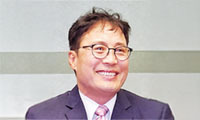
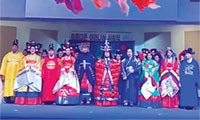

























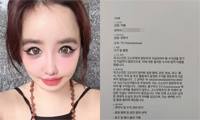

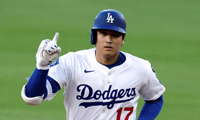
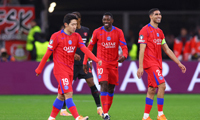








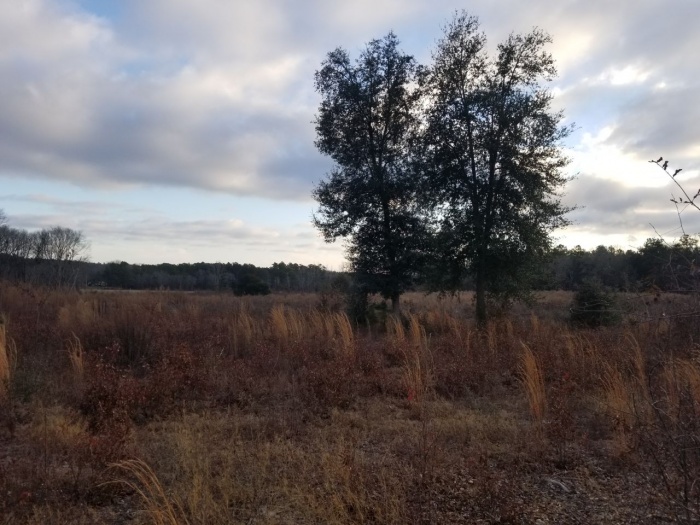





.png)


댓글 안에 당신의 성숙함도 담아 주세요.
'오늘의 한마디'는 기사에 대하여 자신의 생각을 말하고 남의 생각을 들으며 서로 다양한 의견을 나누는 공간입니다. 그러나 간혹 불건전한 내용을 올리시는 분들이 계셔서 건전한 인터넷문화 정착을 위해 아래와 같은 운영원칙을 적용합니다.
자체 모니터링을 통해 아래에 해당하는 내용이 포함된 댓글이 발견되면 예고없이 삭제 조치를 하겠습니다.
불건전한 댓글을 올리거나, 이름에 비속어 및 상대방의 불쾌감을 주는 단어를 사용, 유명인 또는 특정 일반인을 사칭하는 경우 이용에 대한 차단 제재를 받을 수 있습니다. 차단될 경우, 일주일간 댓글을 달수 없게 됩니다.
명예훼손, 개인정보 유출, 욕설 등 법률에 위반되는 댓글은 관계 법령에 의거 민형사상 처벌을 받을 수 있으니 이용에 주의를 부탁드립니다.
Close
x